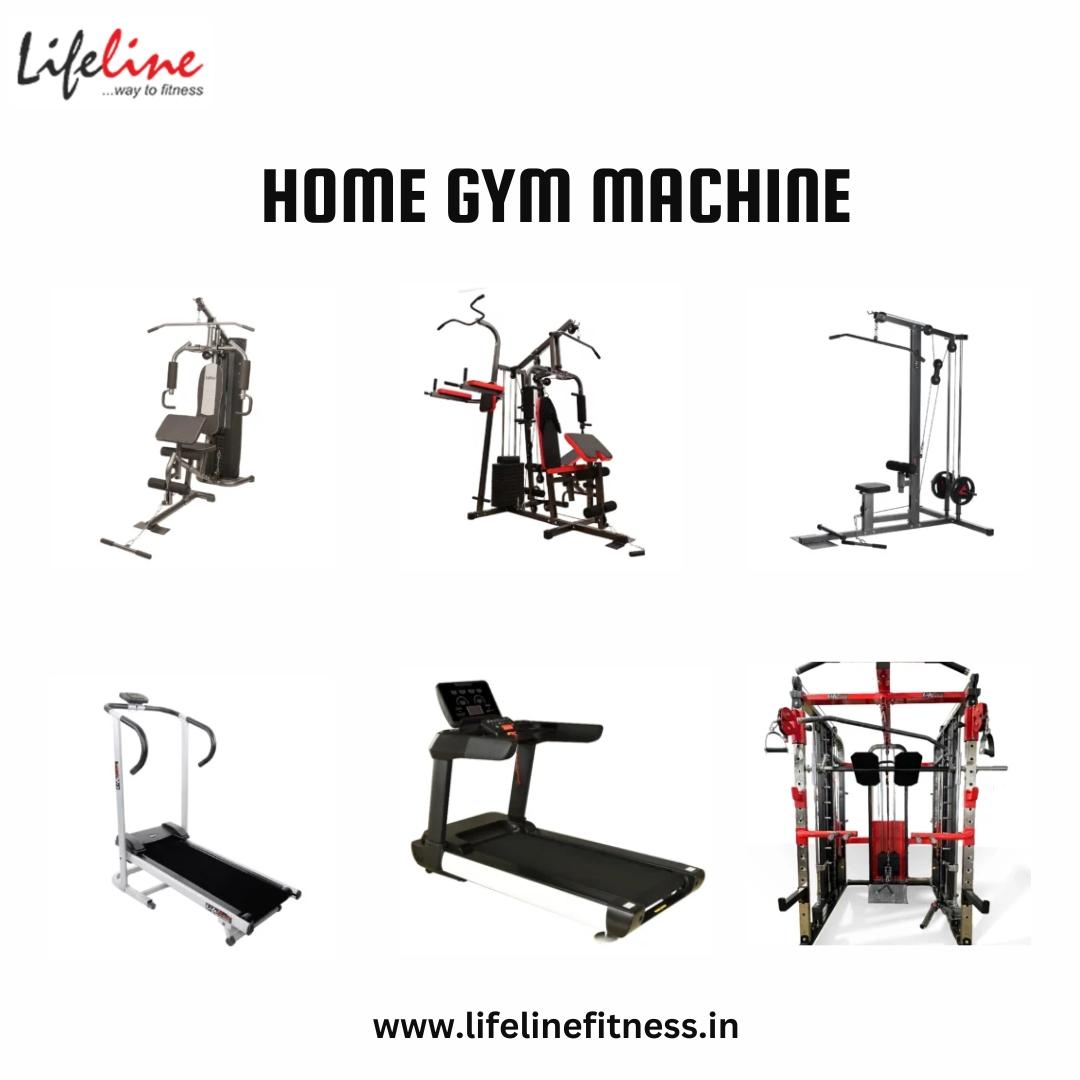The Ultimate Beginner’s Guide to Using a Home Gym Machine Safely

Starting your fitness journey from the comfort of your own home can be exciting and empowering. One of the best ways to do this is by using a home gym machine. These all-in-one machines are designed to offer various exercises without the need for multiple bulky equipment. However, to maximize results and avoid injury, it’s important to understand how to use your home gym machine properly and safely. In this blog, we’ll explore simple and essential steps that will help beginners get started the right way.
What Is a Home Gym Machine?
A home gym machine is a multi-functional piece of fitness equipment that combines several exercise options into one system. It usually includes pulleys, weight stacks, benches, bars, and adjustable settings that allow users to perform strength training exercises for different muscle groups. Ideal for both beginners and experienced users, a home gym machine saves space and money compared to purchasing separate machines or joining a gym.
Why Safety Matters When Using a Home Gym Machine
When used correctly, a home gym machine can be a powerful tool for building strength, toning muscles, and improving overall fitness. But like any fitness equipment, improper use can lead to strains, sprains, or serious injuries. Ensuring you follow safety guidelines not only helps protect your body but also makes your workouts more effective. Understanding form, machine setup, and weight limits is key for beginners.
Step 1: Read the User Manual Thoroughly
Before using your home gym machine, take the time to read the user manual that comes with it. Every machine is slightly different, and the manual will provide instructions on proper assembly, safety warnings, and detailed descriptions of each function. Familiarizing yourself with these details will help you avoid mistakes and improve your confidence as you start training.
Step 2: Start with a Warm-Up
Warming up your body before using a home gym machine is essential to prevent injury and prepare your muscles. Simple activities such as walking, light stretching, or cycling on a stationary bike for 5–10 minutes increase blood flow and reduce stiffness. A proper warm-up also boosts performance and makes your muscles more flexible during workouts.
Step 3: Learn Proper Form for Each Exercise
Good form is more important than lifting heavy weights. Whether you're doing chest presses, lat pulldowns, or leg extensions, make sure your posture is correct and movements are controlled. Avoid jerky or rushed motions. Watching tutorial videos or consulting a certified trainer online can be helpful for beginners who are unsure about proper techniques.
Step 4: Adjust the Machine to Fit Your Body
Your home gym machine will usually come with adjustable seats, handles, and pulleys. Always make sure these are adjusted to fit your height and body shape. If the machine isn’t set up properly, it can lead to discomfort and increase the risk of injury. The correct alignment helps ensure that the targeted muscles are engaged properly during exercises.
Step 5: Begin with Light Weights
If you are new to strength training, it’s wise to begin with lighter weights. Starting with too much resistance can strain your muscles and lead to injuries. Your body needs time to adapt to new movements and build strength gradually. As you become more confident and stronger, you can slowly increase the weights over time.
Step 6: Focus on Breathing
Breathing plays an important role in strength training. Exhale when lifting the weight and inhale when returning to the starting position. Holding your breath during workouts can increase blood pressure and cause dizziness. Practice controlled breathing during every movement to enhance your performance and keep your body safe.
Step 7: Clean and Maintain Your Equipment
To keep your home gym machine functioning properly and safely, regular maintenance is a must. Wipe down surfaces after each workout to prevent sweat buildup, check cables and pulleys for wear and tear, and tighten any loose bolts or screws. A well-maintained machine lasts longer and gives you a smoother workout experience.
Step 8: Take Breaks and Listen to Your Body
Avoid overtraining, especially in the beginning. Your body needs time to recover and adapt to new exercises. Rest days are just as important as workout days. If you feel pain or discomfort while using the machine, stop immediately. Pushing through pain can cause long-term damage. Listen to your body and modify workouts as needed.
How a Home Gym Machine Supports Long-Term Fitness
One of the major advantages of a home gym machine is its convenience. It eliminates travel time to the gym, allows you to exercise at your own pace, and offers privacy. Over time, it becomes easier to stay consistent with your fitness routine when the gym is just a few steps away. By safely using your equipment, you can enjoy long-term benefits like improved strength, weight management, and better overall health.
Conclusion
Using a home gym machine is a great way to begin or enhance your fitness journey, especially for beginners. By focusing on safety, understanding the equipment, and progressing at your own pace, you can make the most of your investment. From reading the manual and warming up properly to maintaining your equipment, each step contributes to a safer and more effective workout. With the right knowledge and routine, you can achieve your fitness goals right at home.
- Art
- Causes
- Crafts
- Dance
- Drinks
- Film
- Fitness
- Food
- Spellen
- Gardening
- Health
- Home
- Literature
- Music
- Networking
- Other
- Party
- Religion
- Shopping
- Sports
- Theater
- Wellness
- Politics
- IT
- Relationship
- Blockchain
- NFT
- Crypto
- Fintech
- Automobile
- Faith
- Family
- Animals
- Travel
- Pets
- Coding
- Comedy
- Movie
- Game
- Computer



